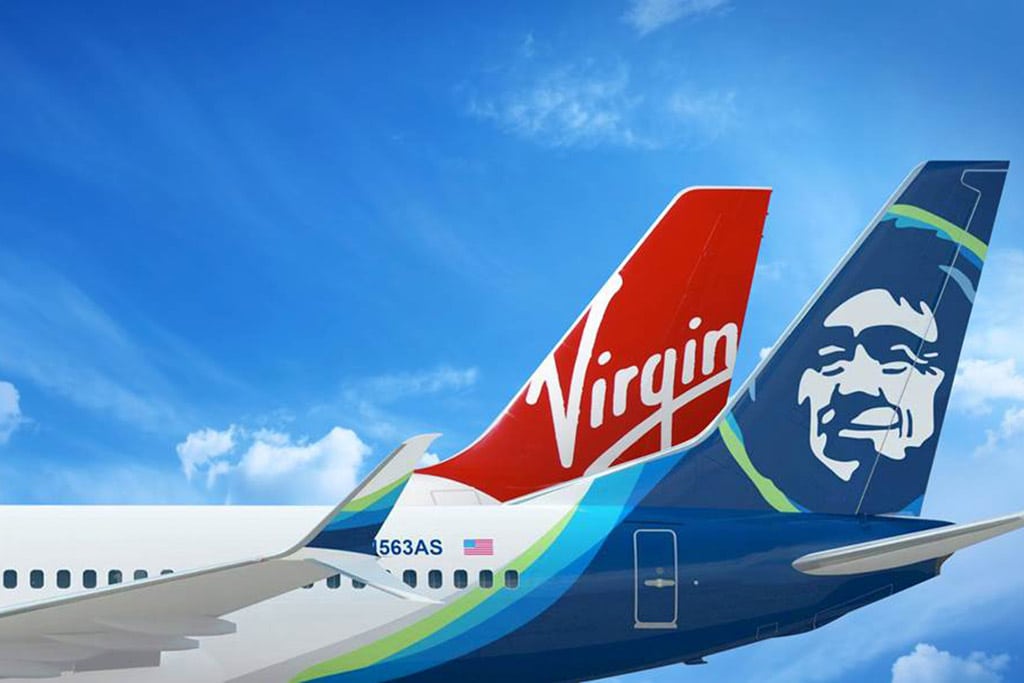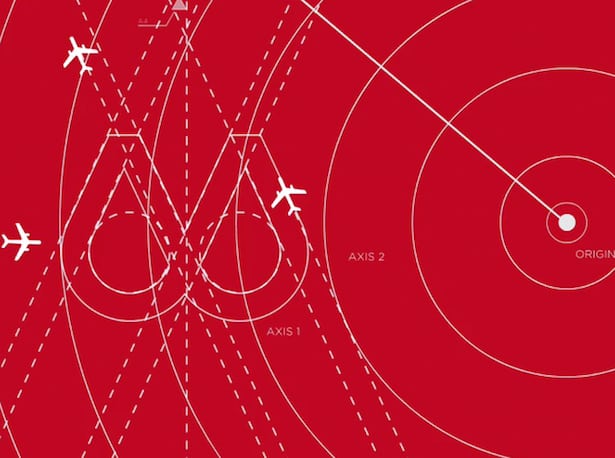Skift Take
First let's get the record straight, we were totally wrong about Delta wanting to add Virgin America as a boutique property to its collection. In the end, Alaska Airlines got it and we’re just not sure what Alaska will do with it; it would seem Alaska isn’t sure either.
Alaska’s acquisition of Virgin America turned the U.S. airline market inside out, puzzling analysts, brand managers, even owners.
So what is to be made of a Virgin America merged into an Alaska Airlines?
A lot of the talk has been about routes and fleets and what makes sense and doesn’t make sense about these two airline models merging together. Some people worried that it’s chocolate and peanut butter, with either airplane maker as chocolate or peanut butter depending on the AvGeek you ask — but that’s neither the point nor the problem.
The real problem of the two aircraft types would come of a full absorption of Virgin America into Alaska Airlines, because the crew are trained to fly different aircraft, but even that, some experts suggest, could be overcome.
“It’s not so much of a problem,” travel industry analyst Henry Harteveldt said. “It’s more of a challenge. When you think about it, it’s a relatively straightforward integration. It should not be as complex as US Airways and American Airlines. It’s two smaller carriers, not as complex as United and Continental.”
More importantly, though there are fleet differences, route gains are a significant benefit.
Industry analyst Addison Schonland, who wrote comprehensive and insightful reviews of the practical realities of the acquisition and the potential benefits and challenges to Alaska of this acquisition, does not believe that, in the end, this deal bodes well for U.S. air travellers.
“For passengers there isn’t anything big in the offering,” he said. “Consolidation is not in passengers’ interests. The airlines will gain economies of scale. Alaska gets to build more of a West Coast fortress. There will be less competition and fares will, inevitably, go higher.”
The Brand Hit
Chris Nurko, Global Chairman, Futurebrand, suggests that Alaska could lose business, were it ultimately to dissolve the Virgin America brand.
“What is interesting is the voice of the customers, those who are flying Virgin: Alaska needs to reach out to them. From what I’ve heard and I’ve read, they don’t seem to be doing that,” Nurko said. “I received an email — as a frequent flyer on Virgin America — it was filled with reassurance, with the proviso that at least for the next 12 months nothing will change. It’s what you’d like to see for frequent flyer communications, but that says to me that someone at Virgin is worried that maybe they’re going to lose customers, particularly for frequent flyers. Loyalty gets tested.”
“Virgin America has important corporate deals with certain clients and there will be a reappraising of it,” Nurko added. “It’s a competitive market place the customers are pretty savvy. The Virgin America transcontinental traveller is savvy.”
Identity Crisis
Experts suggest that perhaps one benefit to the two organizations coming together would be a knowledge and competency cross-over between the two brands. Travel industry analyst Henry Harteveldt suggested that Alaska might have seen this as an opportunity to “acquihire” talent at Virgin America.
Harteveldt said, “It would be great if Alaska’s CEO challenged employees to find 100 things about Virgin America they would want to bring onboard.”
Devin Liddell, Principal Brand Strategist at design consultancy Teague, saw potential for the two brands to take the best qualities of each other and merge them into a better, stronger brand.
“This is exciting for both brands,” Liddell said. “Alaska’s brand is highly personable and efficient—but not particularly hip. Virgin America’s brand is very tech-forward and cool—but with a limited footprint. So it’s going to be a huge win if they can find the sweet spot where those brand personalities overlap. But they are going to have to sort that out, to find a shared sense of purpose that unifies the two cultures moving forward.”
Nurko suggested that learning from the Virgin America brand is not only beneficial to Alaska but critical to customer retention.
“The customer base that chooses Virgin isn’t the customer base that chooses Alaska. It only makes sense if they were to buy it to inject more of the Virgin brand, and they’re not, so I don’t know what’s going to happen,” he said.
Bookings Revelations
While Alaska’s CEO suggested that the two airlines would continue to operate as separate brands, with a single owner, at least for a while, signs point towards a disposal what makes the Virgin America brand unique with preference given to the beloved, well managed, but much more conservative Alaska Airlines brand.
Just this week at the Aircraft Interiors Expo, Alaska announced that it would buy 37 shipsets of economy and business class seats from Recaro Aircraft Seating for its new Boeing 737 MAX 8 and 737 MAX 9 aircraft, in continuation of a well-established supplier relationship. Recaro seats are well made and provide ample comfort and convenience to passengers.
What one did not hear was any announcement of Alaska booking a deal with the new ViaSat Exede Wi-Fi product that Virgin America just installed on part of its fleet which gave it a connectivity product competitive with JetBlue’s and a deal to provide Netflix on-demand entertainment to customers. This is the same connectivity that powers JetBlue’s Fly-Fi product with an Amazon entertainment partnership. And the same connectivity solution American is considering for bid on 200 hundred of its aircraft as a possible switch from Gogo.
When asked, ViaSat told Skift it could not comment on the Alaska and Virgin merger, other than to say they would welcome future discussions with Alaska.
Virgin America has since announced that previous plans to bill for the high-speed Wi-Fi service, which JetBlue continues to offer its customers free of charge, will go into effect this July.
There were also no other announcements from Alaska on purchasing the types of features which make Virgin America’s In-Flight cabin product unique—no sign that anything but economies of scale and a focus on the Alaska cabin product are considered right now, as part of Alaska’s own rebranding initiatives.
Sangita Woerner, Alaska’s vice president of marketing, complemented the Virgin America brand in a recent post on the airline’s blog, describing it as “emotionally engaging.”
“As we plan how our two airlines will integrate in the future, we’ll be taking a close look at the elements of the Virgin America brand and passenger experience that customers identify so strongly with,” she wrote, saying that she could not yet say what of Virgin America’s brand qualities Alaska Airlines would incorporate.
It’s a Heartache
Branson told Condé Nast Traveler that he won’t let Virgin America die, and that he would fight to ensure customers can continue to enjoy the experience they’ve become accustomed to, flying with Virgin America.
But from his own open letter, after the announcement of the sale, it’s difficult to see how he could do that now.
“Because I’m not American, the US Department of Transportation stipulated I take some of my shares in Virgin America as non-voting shares, reducing my influence over any takeover. So there was sadly nothing I could do to stop it,” he said.
If Branson is to protect the Virgin America experience — preserving the full tangible and intangible value of that brand — he will have to exert tremendous influence on the players.
He has to fight an uphill battle and the indisputable argument that any push he makes to preserve Virgin America as a Virgin brand are self-interested. He does, after all, make money from the ongoing franchise on the name.
Then again, Branson makes money on the Virgin brand because the Virgin brand has strong and real commercial value.
To cast that commercial value aside as just so much stuffing, keeping the meat of flight route dominance, could prove a hazard to Alaska going forward.
It would surely prove a culture shock to Virgin America’s existing customers.
JetBlue Plays Along
Hey, #JetBlueVirgins in NY & CA! Get your FIRST flight on us! NoPurNec18+Rules@ https://t.co/bPCtZDGMBm pic.twitter.com/o2gA7UZEuA
— JetBlue Airways (@JetBlue) April 6, 2016
We’ve got more to say on this. Give us a chance to stop giggling first so we can have a bit of a laugh.
Logos and Other Trivialities
We have no way of knowing for certain what inspired the somewhat controversial—and arguably sexist—April Fools joke Virgin America played on the public just before this whole thing went tits up (which is one clear way to describe the mock logo, below).
We can note that Branson is a savvy enough brand man to make his point about the commercial value of brand using a tongue-in-cheek argument that it is just so much disposable, egomaniacal, fluff.
https://youtu.be/vGCUp_FduKc
Hard numbers folk sometimes miscalculate the halo effect of a well crafted brand identity, until it’s too late. In the end, the joke is usually on them.
Our take on the funny logo — since you didn’t ask — was that it looks more like a bra. Those are good for support. The logo design process diagram also reminds us of a route map.
At the centre of this bra, we also think we see the historic British two finger salute.
The Daily Newsletter
Our daily coverage of the global travel industry. Written by editors and analysts from across Skift’s brands.
Have a confidential tip for Skift? Get in touch
Tags: alaska airlines, delt air lines, delta air lines, jetblue airways, passenger experience, richard branson, virgin america
Photo credit: Really, this picture says it all. Virgin America

